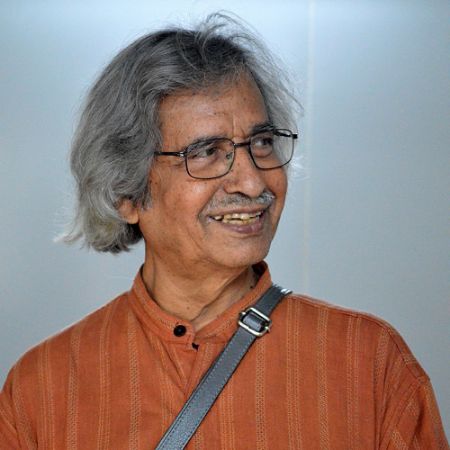Jogen Chowdhury

Jogen Chowdhury was born in erstwhile Bengal, now Bangladesh and studied at the Government College of Arts and Crafts, Kolkata. His works have been exhibited in several shows including the I, III, IV Triennales at Delhi in 1972, 1975 & 1978 subsequently, the Sao Paolo Biennale of 1979; the II Havana Biennale, 1986; ‘Festival of India’, in Geneva 1989 and with Saffronart, the Pundole Art Gallery, New York & Vadehra Art Gallery, Delhi, 2001, 2002 & 2007. His works are in the collection of the National Gallery of Modern Art, Delhi; The Victoria & Albert Museum, London and the Glenbarra Museum, Japan.
Jogen Chowdhury, is a master of lines and has mastered to make the curves depict the character of his figures. By careful distortion of the form he imparts the air of caricature in his figures of men and women. In Chowdhury’s more recent works the sensory experiences of cloth, bolsters, sofas and the human body are cross-projected to produce an uncanny world of tran-substantiated tumescence and flaccidness. Mnemic displacements and personal associations add to the symbolic ambivalence of his motifs, making his images come closer to inexplicable experiences than to explicit signs.






















